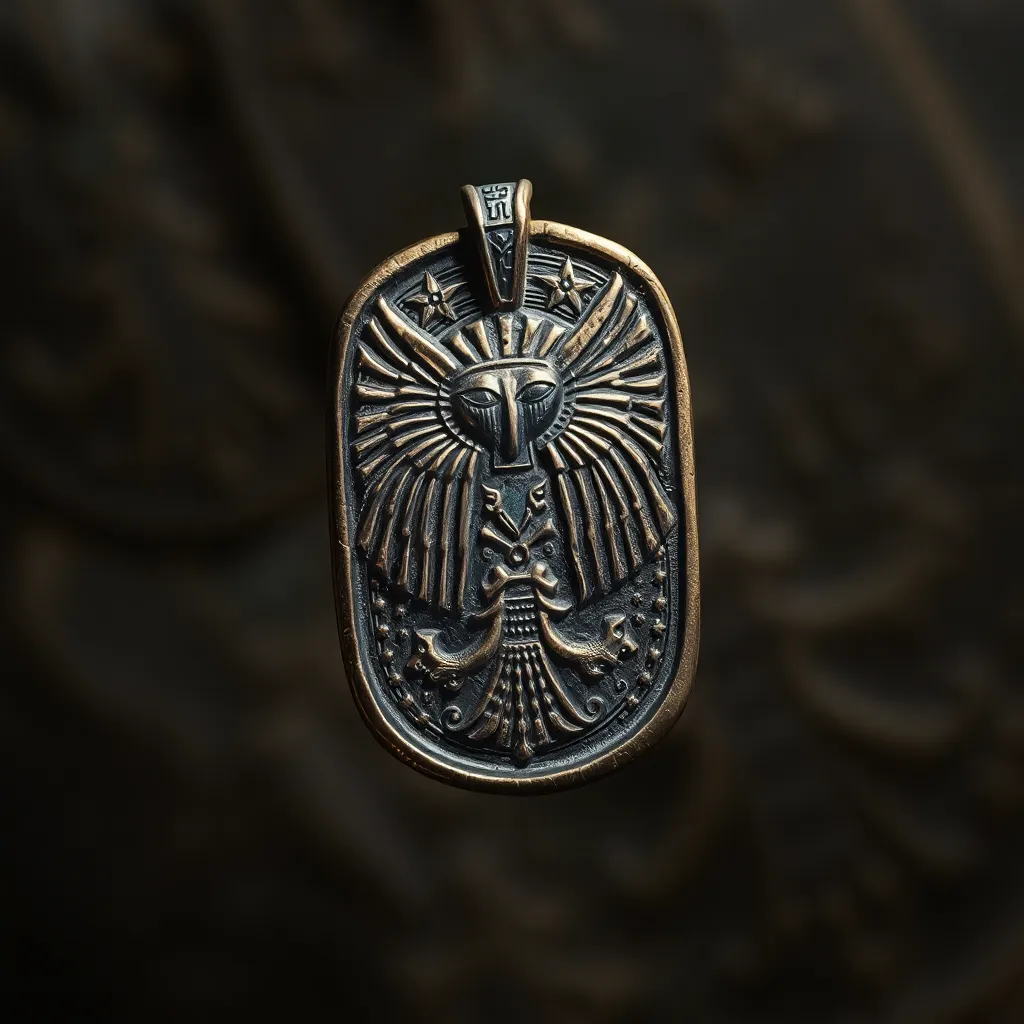The Amulet of Nephthys: Protection for the Departed
I. Introduction
The Amulet of Nephthys is a significant artifact from ancient Egyptian culture, symbolizing protection and guidance for the departed. In a civilization deeply rooted in beliefs about the afterlife, this amulet served a vital role in funerary practices, ensuring the safe passage of souls into the next realm. This article aims to explore the historical context of Nephthys, the symbolism of her amulet, the rituals associated with it, and its enduring relevance in both ancient and modern spirituality.
II. Historical Context of Nephthys
Nephthys is one of the prominent goddesses in Egyptian mythology, often depicted as a protective figure associated with death and the afterlife. She is the sister of Isis and the wife of Set, embodying duality in her nature, representing both darkness and protection.
Her role as a protector of the dead is significant, as she was believed to assist in the mourning process and guide souls safely to the afterlife. Nephthys is often depicted in funerary contexts, highlighting her importance in the journey of the deceased.
Nephthys is connected with other deities, including her sister Isis, who is known for her strong maternal instincts and protective qualities. Together, these goddesses played crucial roles in the rituals surrounding death and rebirth.
III. Symbolism of the Amulet
The Amulet of Nephthys is typically crafted from materials such as faience, gold, and stone, featuring intricate designs that resonate with protective symbolism. Common designs include:
- The hieroglyph of the name Nephthys, often inscribed to invoke her presence.
- Symbols of protection, such as the ankh, representing life.
- The eye of Horus, symbolizing healing and protection.
The meanings associated with these symbols are profound, as they encapsulate the essence of life, death, and rebirth. The amulet serves not only as a talisman of protection but also as a beacon of guidance for souls navigating the afterlife.
IV. Rituals and Practices Involving the Amulet
In ancient Egypt, the Amulet of Nephthys was integral to funerary practices. It was commonly placed within the tombs of the deceased to ensure Nephthys’ protection during their journey into the afterlife.
Some key aspects of its usage include:
- Inclusion in burial customs, often found among grave goods.
- Placement near the heart or on the body to provide protective energy.
- Tomb offerings that included amulets to honor Nephthys and seek her favor.
Rituals performed to invoke Nephthys’ protection often included prayers and incantations, emphasizing her role as a guardian of souls. These rituals reinforced the belief in her power to protect the deceased from malevolent forces in the afterlife.
V. Archaeological Discoveries
Archaeological excavations have uncovered numerous Nephthys amulets, providing valuable insights into the beliefs and practices of ancient Egyptians. Notable findings include:
- Amulets discovered in royal tombs that highlight the status of Nephthys in elite funerary practices.
- Artifacts found in everyday burial sites, indicating widespread use across different social classes.
- Inscribed items that reveal the prayers and incantations used to invoke Nephthys’ protection.
These discoveries are crucial for understanding the cultural significance of Nephthys and her amulet, shedding light on the ancient Egyptians’ complex views of life, death, and the afterlife.
VI. The Amulet in Modern Spirituality
Today, the Amulet of Nephthys continues to hold relevance in contemporary spiritual practices. Many people seek to connect with ancient deities for guidance and protection, and Nephthys symbolizes a powerful figure in this pursuit.
Some modern adaptations include:
- The use of replicas of the amulet in rituals aimed at honoring ancestors.
- Incorporation of Nephthys’ imagery in meditation practices for protection and healing.
- Spiritual rituals that invoke her name, seeking comfort in the face of loss.
As a symbol of protection for the deceased, Nephthys remains a powerful figure for those looking to honor their loved ones who have passed.
VII. Cultural Interpretations and Variations
The Amulet of Nephthys can be compared to protective amulets from other cultures, demonstrating a universal desire for safeguarding souls. For instance:
- In Greek mythology, Hecate serves a similar protective role for souls transitioning to the afterlife.
- In Hinduism, various deities provide protection during the soul’s journey after death.
Nephthys has also influenced other mythologies and religions, appearing in various interpretations of protection across different belief systems. This highlights the shared human experience of seeking guidance and safety in times of transition.
VIII. Conclusion
In summary, the Amulet of Nephthys embodies profound themes of protection, guidance, and the eternal journey of the soul. Through its rich history, symbolism, and continued relevance, it reflects the enduring legacy of ancient Egyptian beliefs.
The significance of this amulet extends beyond the past, resonating with modern spirituality and practices. It serves as a reminder of the love and connection that persists between the departed and their loved ones, offering solace in the face of mortality.
Ultimately, the Amulet of Nephthys stands as a testament to the ancient Egyptians’ understanding of life, death, and the spiritual protection that transcends time.




